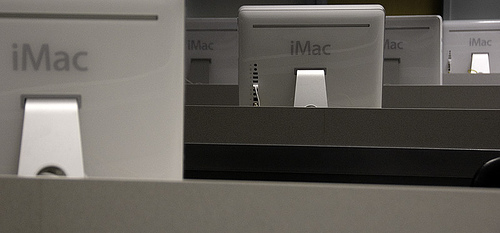While most of us went on break, the University of Victoria (UVic) was attempting a “green holiday break.”
Between December 25 and January 3, UVic turned thermostats down to 16 degrees Celsius (except temperature-sensitive areas), turned off exhaust fans, fume hoods, and turned off building lights (where possible). Staff were encouraged to turn off their computers, printers, copiers and other equipment in their offices and work areas.
The university projected that in exercising conservative energy-saving practices, they could reduce their carbon consumption by 41 tonnes during the 10-day period. UVic was not able to provide actual results of the “energy break” as of press time.
“Sure, it’s great UVic is powering down for the winter break, turning off lights and building heat,” said Edward Pullman from the University of Victoria’s Sustainability Project (UVSP). He pondered, however, what other steps could be taken. “Are these steps that have been taken applied overnight and on the weekends as well? Do they keep the heat on overnight when possibly one or two people are burning the midnight oil? This is a good initiative, but is it really relevant if this is something we aren’t changing our practices for the other 50 weeks of the year?”
While reducing the greenhouse gas consumption of university buildings is only a modest portion of our energy use as a campus, it is a necessary first step in moving campus beyond carbon neutral. UVic is taking other steps, however, especially in new buildings.
CommonEnergy, a network of university, community and regional partners working to create solutions to the problems of climate change state that “by achieving Leadership in Energy and Environmental Design (LEED) ratings on several projects, UVic has already made commendable progress in reducing greenhouse gas emissions from new buildings. In order to reduce greenhouse gas emissions further and reach climate neutrality, our existing buildings need to be retrofitted to LEED standards or better.”
Last summer the Canada Green Building Council recognized the Social Sciences and Mathematics Building’s acquiring of the LEED gold standard in building design. It is the third building on campus to achieve this recognition, preceded by the Medical Sciences and Engineering/Computer Science Buildings, which also obtained gold status.
Some people argue that there’s more to green buildings than LEED certification, however.
“Terms LEED certification or living buildings are only reference points of sustainable design,” said Jay Worthing, a UBC architecture student and co-founder of the UBC Emerging Green Builders. “Rather than looking at buildings as autonomous energy users, universities ought to look at the campus as an energy system of interconnected buildings, especially because universities have a unique opportunity to do so with multiple buildings on a single land base. How is the university operating on a community level?”
UVic is starting consultation for their next strategic plan, which outlines the overall direction of the university for the next five years. Students and members of the university community will have the opportunity to give input into the future sustainability of the university during the consultation period.
This article was originally published in the Martlet, the University of Victoria students’ newspaper.




